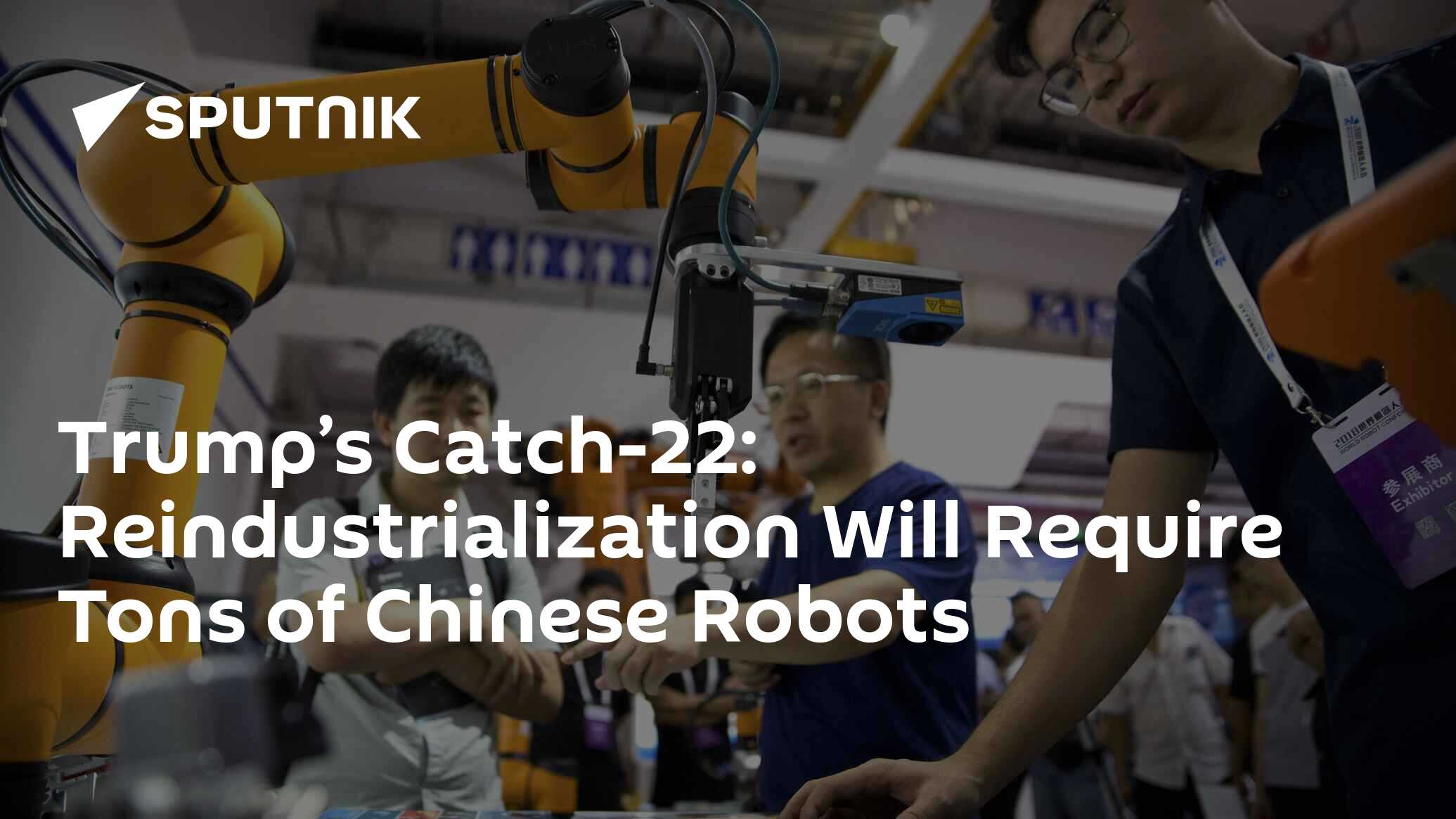https://sputnikglobe.com/20250525/trumps-catch-22-reindustrialization-will-require-tons-of-chinese-robots-1122127628.html
Trump’s Catch-22: Reindustrialization Will Require Tons of Chinese Robots
Trump’s Catch-22: Reindustrialization Will Require Tons of Chinese Robots
Sputnik International
An array of US tech-focused companies, including Tesla, Agility Robotics and Figure AI are working on a new generation of domestic industrial robots. For now though, about 40% of robotic systems in the US come from Japan, 16% from China, and 12% from Germany.
2025-05-25T18:45+0000
2025-05-25T18:45+0000
2025-05-25T18:45+0000
economy
donald trump
china
japan
germany
tesla
industrialization
robotics
manufacturing
https://cdn1.img.sputnikglobe.com/img/07e9/05/19/1122127740_0:160:3072:1888_1920x0_80_0_0_383709f57df2c75cf945039f211abdf6.jpg
The Trump administration’s push to revive modern, automated domestic manufacturing will require the widespread use of advanced industrial robots from abroad, including China.Japan, China, Germany and South Korea – all targeted by Trump’s trade wars to one degree or another, produce roughly 70% of the world’s robots, according to the International Federation of Robotics.China’s prowess in the field is “growing rapidly,” Axios says, citing the successful prioritization of robotics in the ‘Made in China 2025’ initiative, launched under President Xi’s guidance in 2015.As for the US, its industrial robotics capabilities are lagging behind –going from pioneering the use of robots at automotive manufacturing in the 1960s, to seeing Japanese and European companies catch up and overtake the US thanks to lack of investment, government support and union resistance.The White House hopes major investments required to rebuild the industrial robotics sector can be resolved through tax incentives, and assures its reshoring efforts are designed to “directly address” issues like foreign robot imports in manufacturing “critical to national and economic security.”
https://sputnikglobe.com/20250525/trumps-tariff-ultimatum-whichever-side-brussels-picks-europeans-lose-1122127325.html
china
japan
germany
Sputnik International
feedback@sputniknews.com
+74956456601
MIA „Rossiya Segodnya“
2025
News
en_EN
Sputnik International
feedback@sputniknews.com
+74956456601
MIA „Rossiya Segodnya“
https://cdn1.img.sputnikglobe.com/img/07e9/05/19/1122127740_171:0:2902:2048_1920x0_80_0_0_8edbcbe24bdf94c1dd17a3b80942704a.jpg
Sputnik International
feedback@sputniknews.com
+74956456601
MIA „Rossiya Segodnya“
can us reindustrialize without china, does us manufacturing use chinese robots, if so how many
can us reindustrialize without china, does us manufacturing use chinese robots, if so how many
An array of US tech-focused companies, including Tesla, Agility Robotics and Figure AI are working on a new generation of domestic industrial robots. For now though, about 40% of robotic systems in the US come from Japan, 16% from China, and 12% from Germany.
The Trump administration’s push to revive modern, automated domestic manufacturing will require the widespread use of advanced industrial robots from abroad, including China.
Japan, China, Germany and South Korea – all targeted by Trump’s trade wars to one degree or another, produce roughly 70% of the world’s robots, according to the International Federation of Robotics.
China’s prowess in the field is “growing rapidly,” Axios
says, citing the successful prioritization of robotics in the ‘Made in China 2025’ initiative, launched under President Xi’s guidance in 2015.
As for the US, its industrial robotics capabilities are lagging behind –going from pioneering the use of robots at automotive manufacturing in the 1960s, to seeing Japanese and European companies catch up and overtake the US thanks to lack of investment, government support and union resistance.
The White House hopes major investments required to rebuild the industrial robotics sector can be resolved through tax incentives, and assures its reshoring efforts are designed to “directly address” issues like foreign robot imports in manufacturing “critical to national and economic security.”

